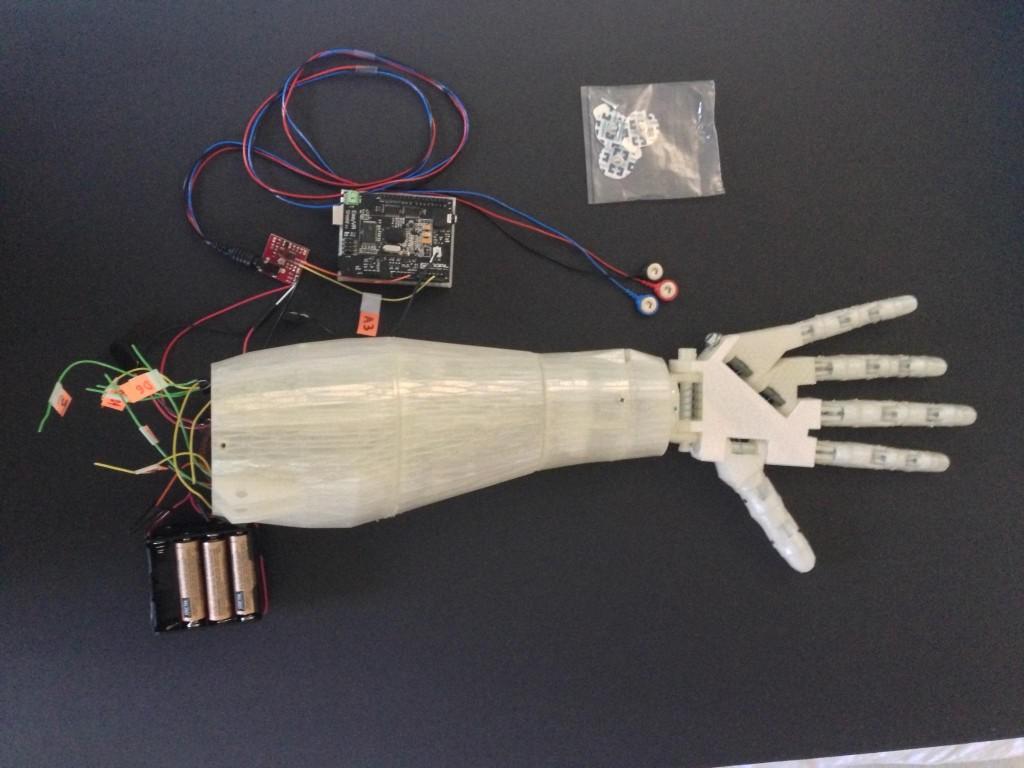HIGH SCHOOL STUDENT 3D PRINTS VOICE-CONTROLLED ROBOTIC ARM
Posted by Jacqui Adams on
Taken from 3D Print.
by
Using a combination of motors and 3D printed parts, he was able to create a robotic, voice-operated arm for a cost of about $260. Many high-end prosthetic arms can cost upwards of $35,000. Cheaper options are available, but with lower cost comes lower quality. Some have little function other than opening and closing the hand. Using a combination of voice control and electromyography, Mehta’s prosthetic hand can grasp, pinch, point, and perform other precise tasks the way a real hand would. It also comes a step closer to simulating the way a natural limb is controlled. Rather than the brain sending a command to the arm to move, the user speaks a command into a small microphone attached to the arm.
“You can say ‘spoon’ and the hand will make a shape that will be able to hold a spoon,” Mehta said.
Another factor the 17-year-old considered was upgradability. Children with prosthetics face a challenge that adult amputees do not. Prosthetics can be outgrown just as clothing can, and, as Mehta pointed out, many children need to change their prosthetics every six to eight months. By using inexpensive 3D printed parts, the robotic arm can be resized for a minimal cost.
In February of this year, Mehta entered his robotic arm into the Irvine Public School District science fair, where he won first place. He then went on to win four first-place awards in the Orange County Science and Engineering Fair, and was subsequently chosen to enter the 2015 Intel International Science and Engineering Fair in May. There, his project took third place in the biomedical and health sciences category. He also took a third place award in the California State Science Fair; you can see his project abstract here.
Share this post
- Tags: 3D in classroom, 3d printing
